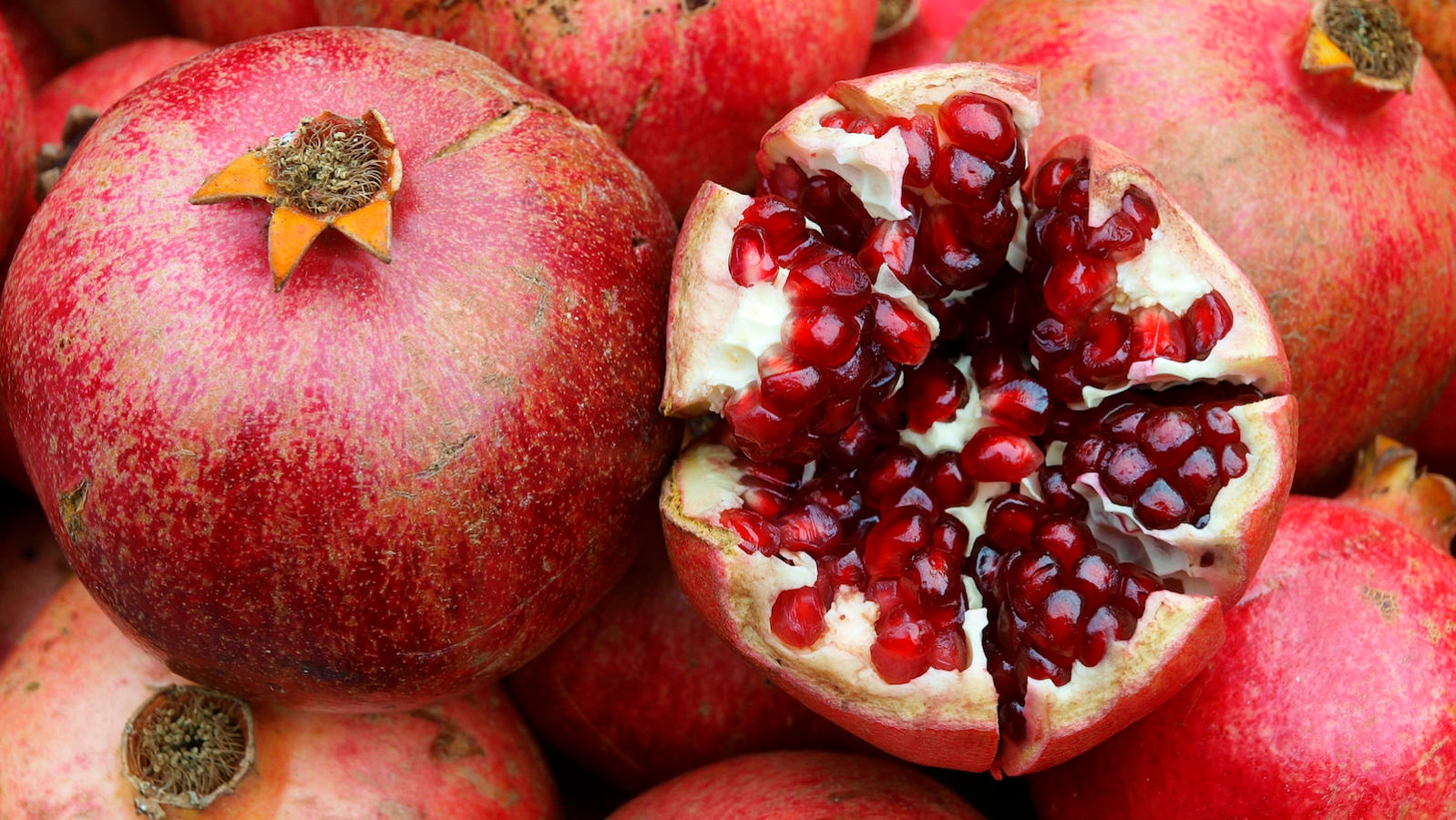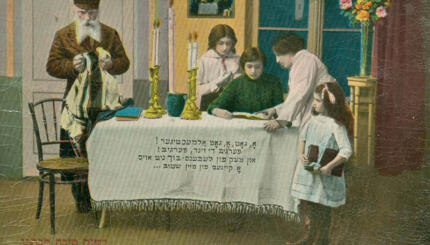Images of pomegranates are mainstays of Rosh Hashanah cards, Jewish jewelry and a range of Jewish ritual objects, and the fruit itself makes frequent appearances in Jewish cuisine. But what’s so Jewish about this ancient treat? Quite a lot!
1. The Pomegranate Is One of Israel’s “Seven Species.”
The pomegranate is one of the seven species of Israel (along with wheat, barley, grapes, figs, olives, and dates) listed in the Torah in Parashat Eikev (Deuteronomy 7:12-11:25).
2. Pomegranates Traditionally Symbolize Fertility and Love.
In Jewish tradition, pomegranates are a symbol of fertility and love, winning them frequent mention in, among other biblical texts, the Song of Songs. For example (Song of Songs 4:3): “Your lips are like a crimson thread; your mouth is lovely. Your brow behind your veil [gleams] like a pomegranate split open.”
3. Pomegranates Decorate Many Torah Scrolls.


Help us keep Jewish knowledge accessible to millions of people around the world.
Your donation to My Jewish Learning fuels endless journeys of Jewish discovery. With your help, My Jewish Learning can continue to provide nonstop opportunities for learning, connection and growth.
The decorative ornaments at the top of many Ashkenazi Torah scroll covers are often shaped like pomegranates and are called rimonim, the Hebrew word for pomegranate.
4. Pomegranates Are Part of the Sephardic Rosh Hashanah Seder.
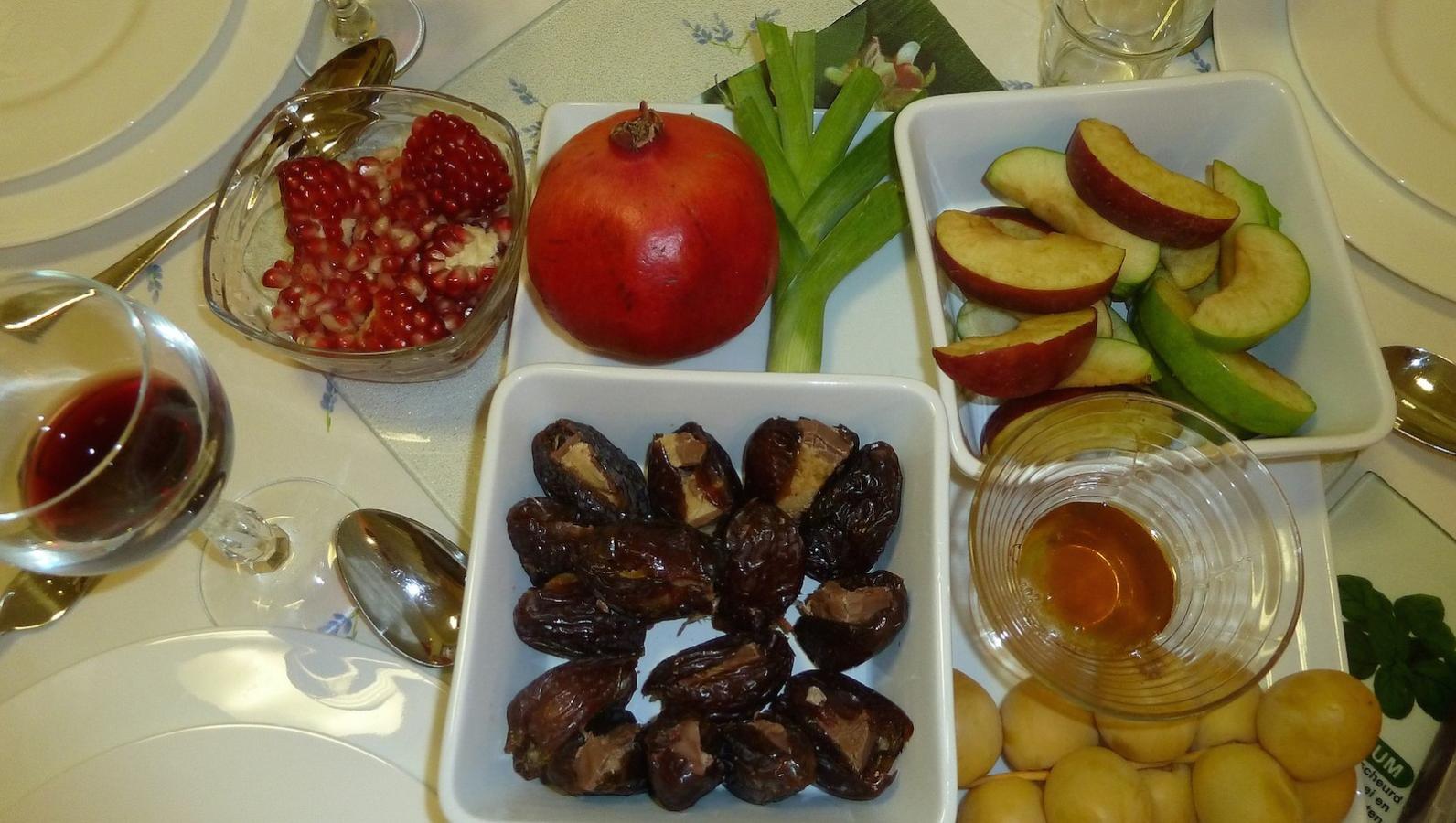
The pomegranate is one of several symbolic foods incorporated into the Rosh Hashanah seder, a ritual. Before eating the pomegranate seeds, Jews traditionally say, “May we be as full of mitzvot (commandments) as the pomegranate is full of seeds.”
5. A Pomegranate Is Often the “New Fruit” on the Second Night of Rosh Hashanah.
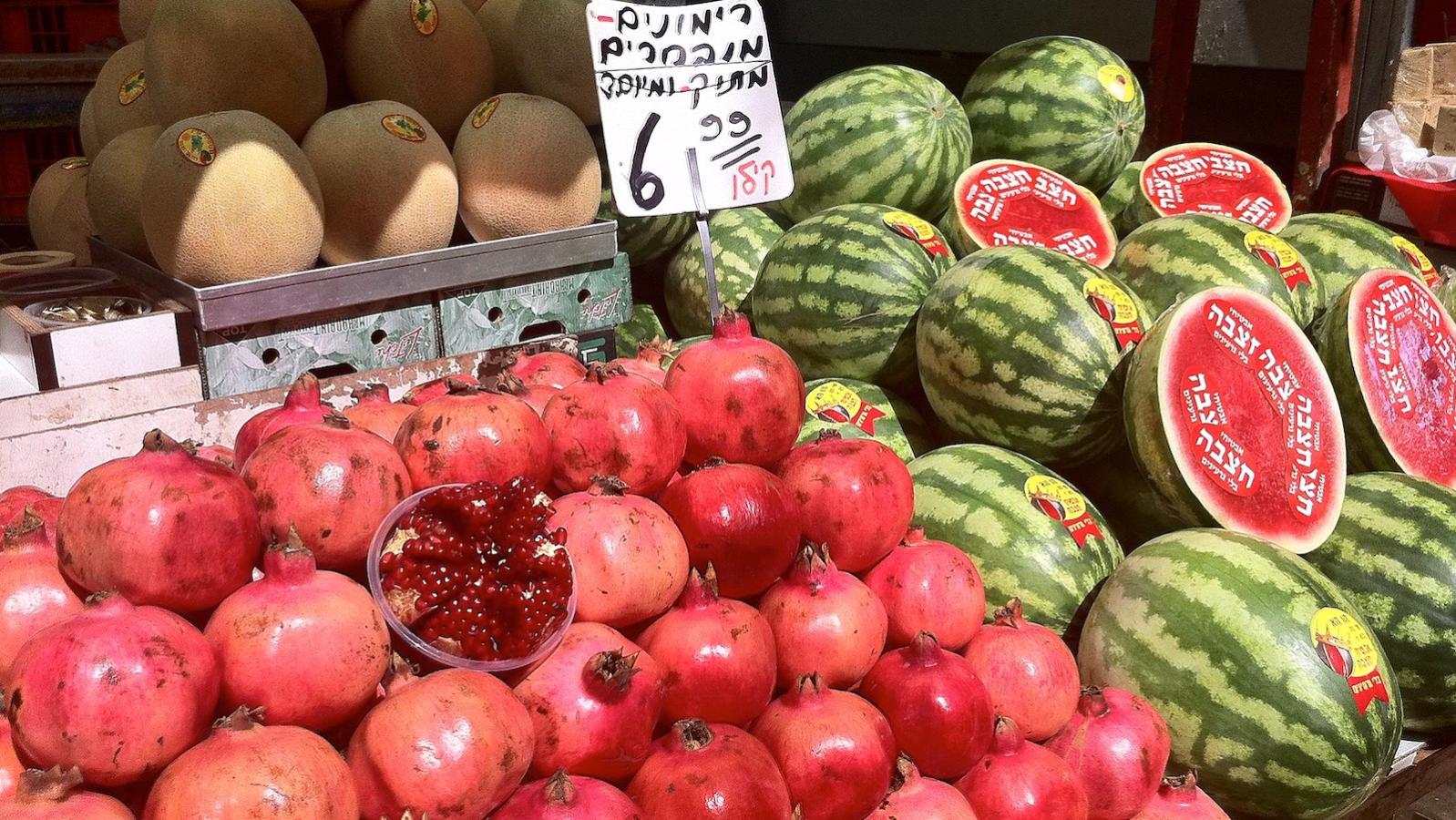
Many Jews use pomegranates on the second night of Rosh Hashanah, for the custom of saying a blessing over a “new fruit,” one that people have not eaten in a long time.
6. Pomegranate Seeds Are Associated With the 613 Mitzvot (Commandments).
The pomegranate is often said to have 613 seeds, corresponding to the 613 mitzvot (plural of ) derived from the Bible. While this is not actually true (the number of seeds in each pomegranate varies widely), some have theorized that this belief stems from a misinterpretation of a passage in the (Berachot 4), which concludes that even “the empty ones among the Jews are full of mitzvot like a pomegranate is [full of seeds.]”
7. Pomegranates Continue to Grow in Israel.
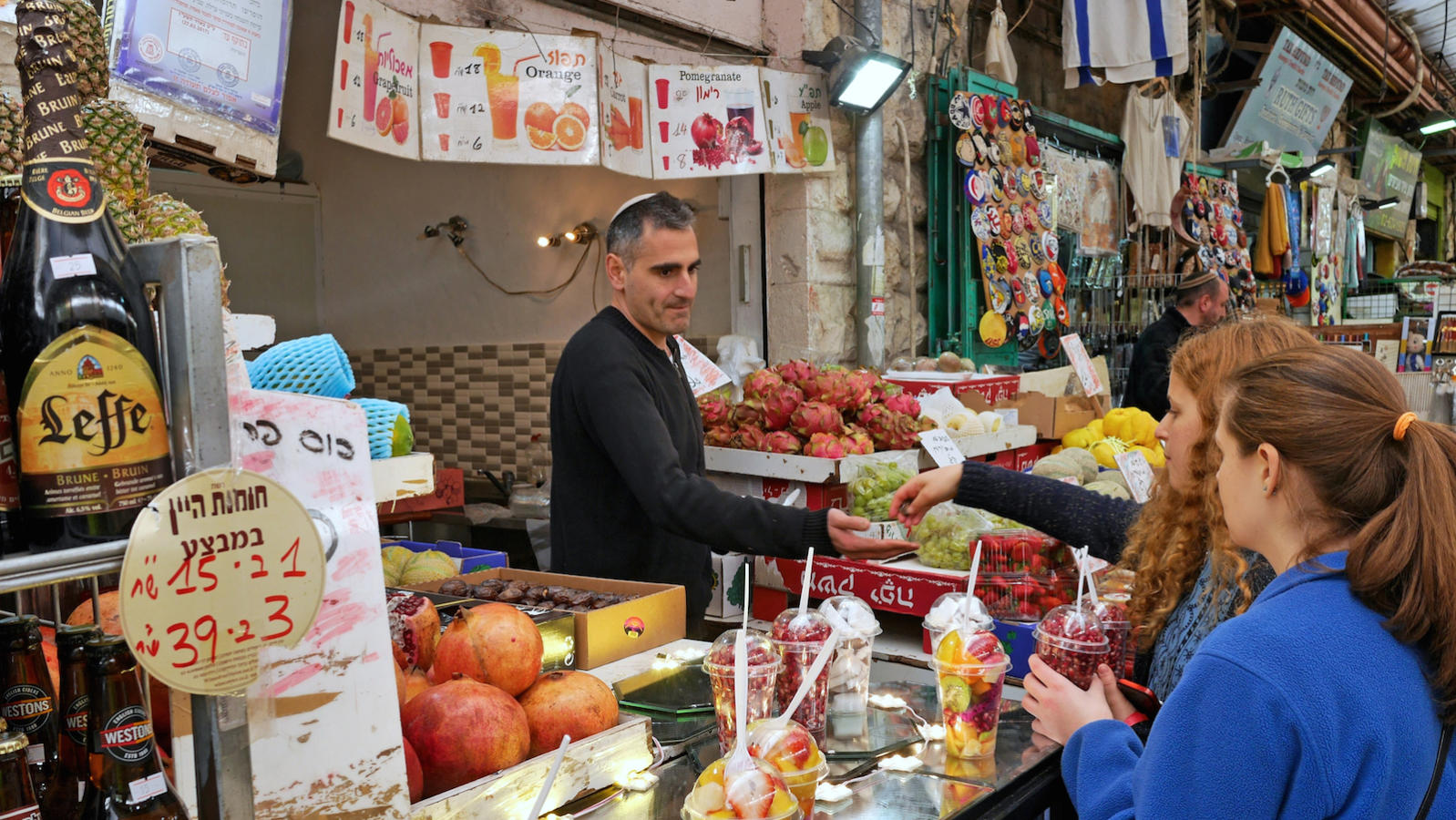 Pomegranates have been cultivated in Israel (and throughout the Middle East) for thousands of years, and they continue to grow there in abundance. When pomegranates are in season, fresh-squeezed pomegranate juice is available in kiosks throughout the country. According to the Israeli Agriculture International Portal, Israel harvests approximately 60,000 tons of the fruit annually, of which about half are earmarked for export.
Pomegranates have been cultivated in Israel (and throughout the Middle East) for thousands of years, and they continue to grow there in abundance. When pomegranates are in season, fresh-squeezed pomegranate juice is available in kiosks throughout the country. According to the Israeli Agriculture International Portal, Israel harvests approximately 60,000 tons of the fruit annually, of which about half are earmarked for export.
8. Pomegranates Are Frequently Mentioned in Jewish Texts.
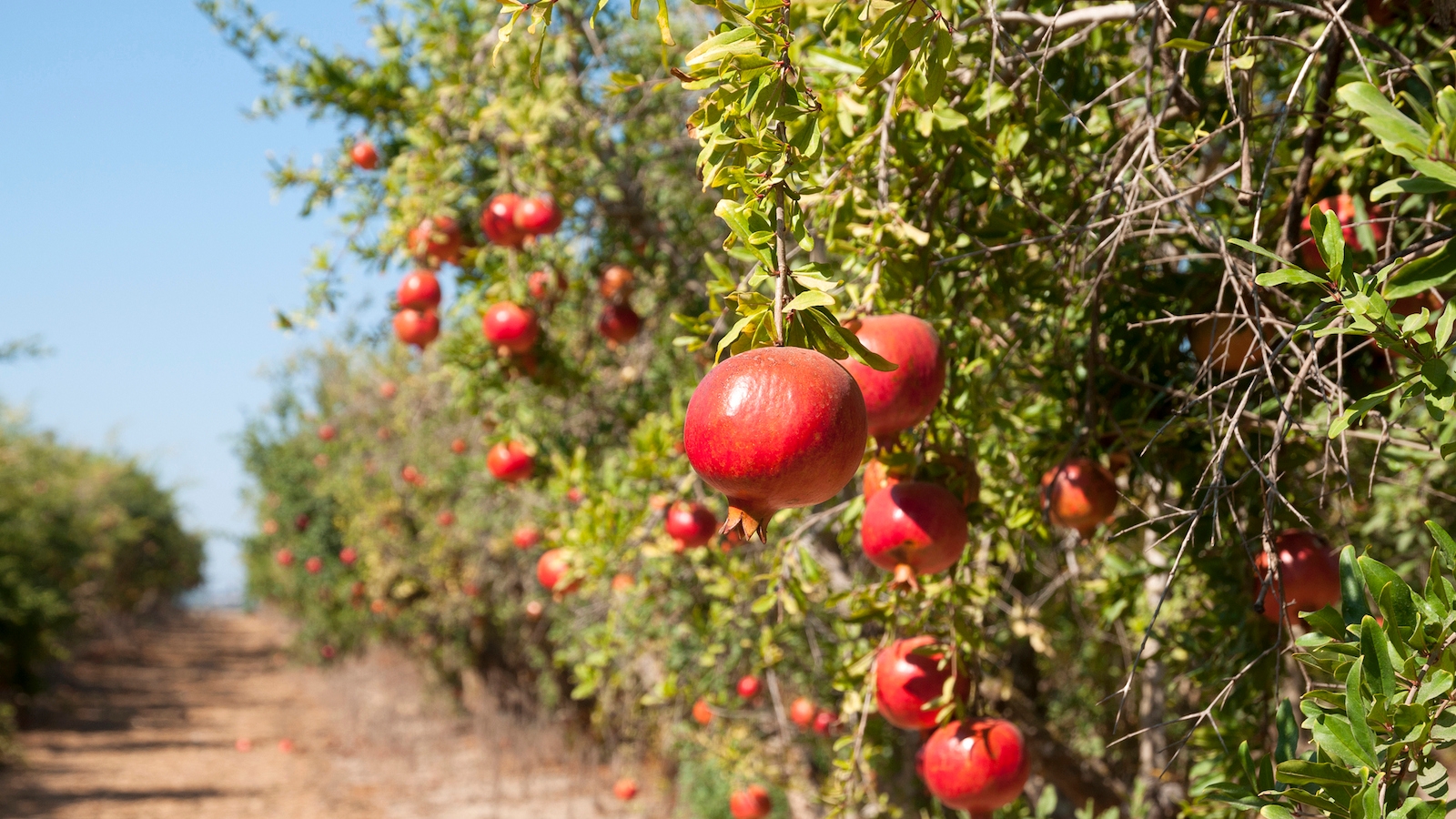 Pomegranates make frequent appearances in the Bible and
, including:
Pomegranates make frequent appearances in the Bible and
, including:
- In Parashat Sh’lach (Numbers 13:1-15:41) in the Torah, a pomegranate is one of the items brought back by the 12 spies when they return from scouting out the Land of Canaan.
- Images of pomegranates adorn the robes of the high priest, as described in Parashat Tetzaveh (Exodus 27:20 – 30:10) of the Torah.
- In one story in the Talmud, the wife of a rabbi (Hiyya Bar Ashi) tests him by disguising herself as a prostitute and then seducing him, demanding he pay her with a freshly picked pomegranate. (Kiddushin 81b)
9. Pomegranates Are Found on Ancient Judean Coins.
An image of a pomegranate decorated some ancient Jewish coins, including a recently discovered one from the era of the Bar Kochba revolt (second century CE).
Try These Pomegranate Recipes for Rosh Hashanah
Pomegranate Brisket with Cranberry Succotash
Pomegranate and Honey Glazed Chicken
Moroccan Lamb Shanks with Pomegranate Sauce
Black-Eyed Peas with Turmeric and Pomegranate
Crockpot Short Ribs with Pomegranate Molasses
Rosh Hashanah Pomegranate Date Blondies
